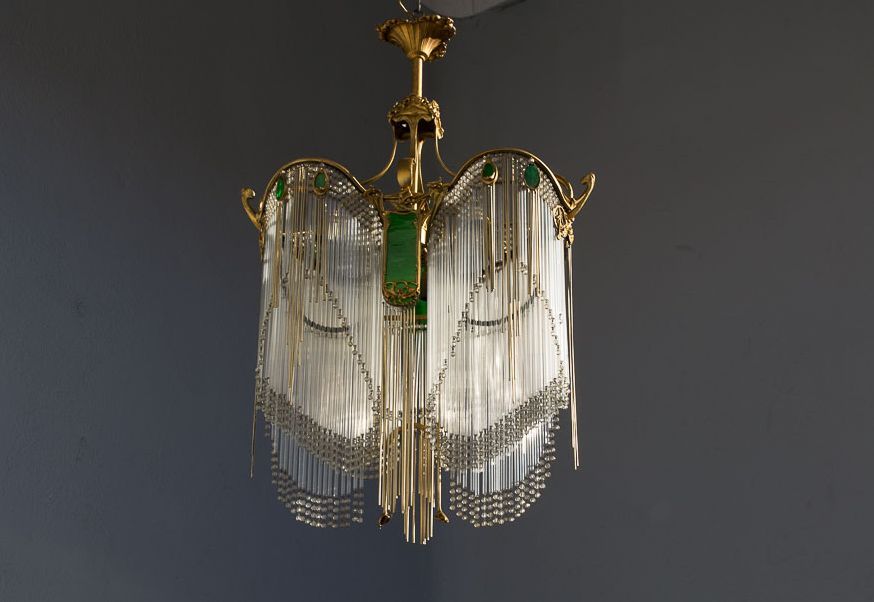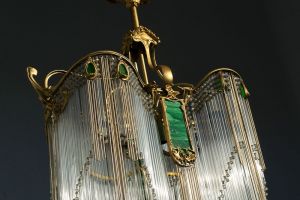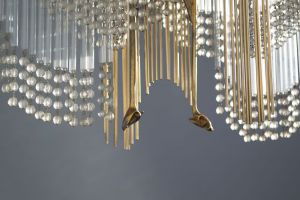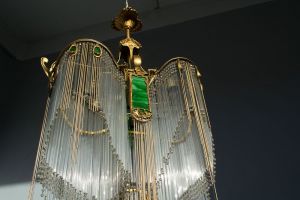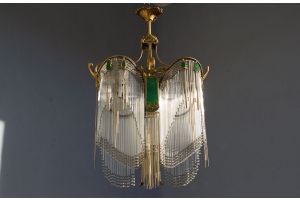Hector Guimard art nouveau ceiling light
HECTOR GUIMARD (1867-1942) art nouveau ceiling light.
An Art Nouveau ormolu five light chandelier, elaborate organic form hung with ten coloured glass panels and brass and tubular glass drops. French late 19th/early 20th century.
About 35cm x 70cm (14" x 18")
1 meter drop. (40")
An Art Nouveau ormolu five light chandelier, elaborate organic form hung with ten coloured glass panels and brass and tubular glass drops. French late 19th/early 20th century.
About 35cm x 70cm (14" x 18")
1 meter drop. (40")
REFERENCE: gui2310
Bio
Born in Lyon in 1867, Hector Guimard was an important French architect, interior designer and designer of Art nouveau objects. Hector Guimard studied from 1882 to 1885 at the École Nationale des Arts Décoratifs in Paris and then in 1889 an der École des Beaux-Arts.He subsequently traveled through Belgium and England. In Brussels Guimard saw the buildings only recently designed by the Belgian designer Victor Horta, whose conception of art would exert a lasting influence on his own work.
Hector Guimard's first project was to design the interior of the "Au Grand Neptune" restaurant in Paris. This was followed by several commissions for private dwellings in Paris and environs. His most important work and masterpiece was the Paris dwelling Castel Béranger, 60 rue La Fontaine (1894-1897). His best-known works are likely to be the entrances to the Paris Métro, which was completed just in time for the 1900 World Exposition.
This innercity marvel of technological progress is framed by ornamental, organic natural forms. By 1903 Hector Guimard had designed numerous Métro entrances in the Art nouveau style, featuring wrought iron, bronze and glass, of which eighty-six have survived to the present day. Hector Guimard is regarded as the leading exponent of the Art nouveau style, which is often called the "Style Guimard" in France.
The creation of Castel Béranger is documented in Hector Guimard's portfolio "L'art dans l'Habitation Moderne" (1898) with designs and photographs of his works. Advocating the unity of architecture and spatial art more coherently and cogently than anyone else, Guimard conceived his buildings as total works of art.
Hector Guimard's conception of design excluded no element of daily living. No detail was unimportant to him. Hector Guimard did not produce his first standardized furniture designs for mass production until 1920. However, with the rise of the Art déco style and the concomitant changes in formal intention, which Hector Guimard refused to follow, his designs went out of fashion.
In 1938 Hector Guimard emigrated to New York, where he died in 1942.




